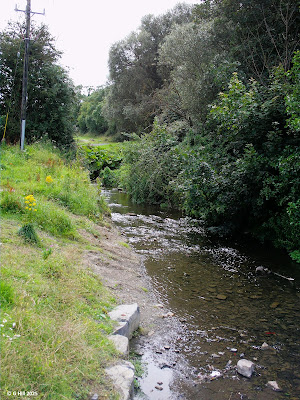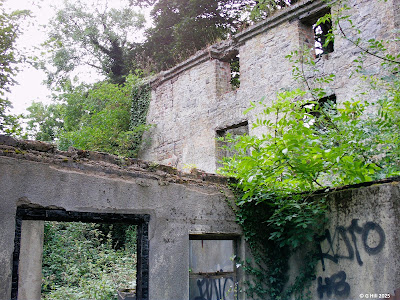A guide to the best and sometimes off the beaten track historical ruins around Ireland and how to get there.
Tuesday, 25 November 2025
Church Of The Rath Co Cavan
Sunday, 21 September 2025
Woodstock Castle Athy Co Kildare
Above Image: Southwest facing wall
Tuesday, 19 August 2025
St. Bridget's Well Clondalkin Co Dublin
This tidily kept holy well is situated in a narrow oasis between a main road and an entry road to a housing estate. The natural spring well was drawn upon by St. Bridget in the 5th century to help cure pagans of their ills and has been revered by many over the centuries. Originally set in pastureland it has been encroached upon by the expanding environs of Dublin hiding it away from view. I only discovered its existence purely by chance looking at a map one afternoon and decided to pay it a visit.
In the 1990's the adjacent road to the well was widened and the stream that fed into the well and subsequently the Camac river was diverted leaving the well dry which is a shame really given the longevity of its existence. Even though it was reconnected to the mains water supply later this has somewhat undermined the idea of the curative powers that the original well water was thought to have. Another victim on the site was a the very old rag tree which was removed in 2022 as it became subject to an Ash tree disease.
Originally a visitor would dip a small piece of cloth in the water and apply it to the face. Subsequently eye ailments were often cured. The rag was then hung upon the tree.
The structure surrounding the well was constructed in 1761 and the grotto in the 1950's. A small brightly coloured wooden door covers the well with a long narrow gap extending outwards from under the door between the paving stones. This is where today the water is accessible. I imagine that although what trickles out it is mains water, it is likely that those who visit consider it to be blessed by this ancient and venerated site.
To find the well take the R113 (Fonthill Road) from Newlands Cross. Drive until you reach the second left hand turn onto Boot Road (L1003) Turn left here and immediately left again onto Brideswell Lane and the well is approx 50m along on your left. There is some room along the lane to park.
Monday, 30 June 2025
Old Oil Mill Corkagh Park Co Dublin
Above Image: The Camac River
Above Image: Oil Mill gate pillar
Tuesday, 22 April 2025
Packhorse Bridge Milltown Co Dublin
Above Image: Access point from Milltown Rd.
Tuesday, 25 March 2025
Ballinskelligs Abbey & Castle Co Kerry
Above Image: The approach laneway and entrance gate





















































